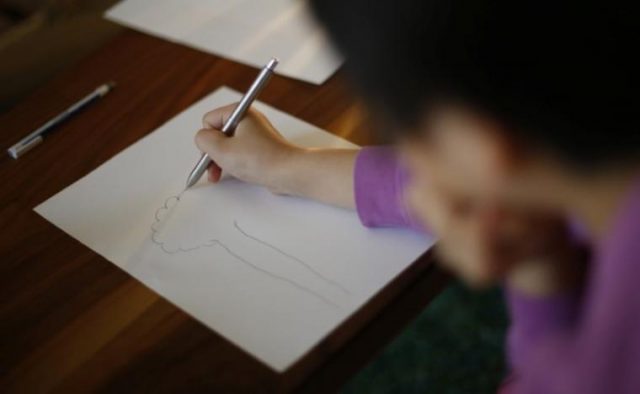
TOKYO — Every year, more than 20,000 abused, delinquent, developmentally challenged or otherwise troubled Japanese children needing emergency housing pass through a system of shelters.
But the conditions inside many of them are so regimented that the children can find the experience harrowing, according to interviews with more than a dozen people who have stayed or worked in the facilities, as well as child psychology experts familiar with the system.
The concerns have prompted government officials to suggest that reform is needed, though there is no indication of when that will occur. Government-sponsored committees aimed at improving child welfare policies have been established, and changes to the centers will be on their agenda.
“No one thinks it’s okay to keep these shelters exactly the way they are,” said Yu Hamada, an official at the Ministry of Health, Labor and Welfare. “There hasn’t been any discussion to date as to how exactly they should function, and that’s what we’re working on.”
Originally set up after World War Two to provide food and shelter for wandering orphans and petty juvenile criminals, Japan’s 136 shelters haven’t evolved much in the past 70 years, experts say.
The children, who can be any age between 1 and 17, are usually kept indoors and away from school so that they can’t run off or abusing parents can’t grab them.
In many of the shelters, workers with little training impose strict rules and schedules, don’t allow cell phones or toys from home, and make isolation a common punishment for misbehaving, the sources said. Stricter shelters don’t allow chatting during meals or even making eye contact with other kids, the people with knowledge of the conditions said.
The shelters vary in age, size and quality. Some have gymnasiums or playgrounds and are well-stocked with DVDs and comic books; others are run-down with peeling wallpaper and old tatami mats, sleeping 10 to a room, these people said.
They are administered by child guidance centers that are part of the local prefectural and municipal governments, and have gone largely unsupervised by the central government. They are funded with local and central government money.
Despite its child-friendly image, Japan lags other advanced economies when it comes to protecting the rights of its youth in official care. A fundamental problem is a dearth of foster parents, which means a greater percentage of kids end up in some kind of group care facility than in other developed countries.
Acknowledging problems in the system, Japan last year revised its child welfare law to spell out that children have rights, though those are not fully enforced by welfare workers, the experts say.
“These shelters should be a place for children to get the care they need,” said Yukiko Yamawaki, a psychotherapist who worked with children under care for the city of Tokyo for nearly two decades until 2015 and often visited the facilities. “But the attitude is, ‘You’re lucky you have a place to sleep and you’re not getting killed.’ They don’t see their jobs as providing comfort and care.”
Defenders of the system say tight discipline is needed as the children come from a wide range of backgrounds and needs, and without firm control chaos would reign.
“It’s communal living so we do have to set some rules,” said Chikako Yoshikawa, who oversees a shelter in Tokyo. “With a limited number of workers caring for lots of children, a certain level of control is inevitable to prevent accidents.”
‘Not a normal place’
The average stay in the shelters is 30 days, though some children end up in staying for months before they return home, go into foster care or another residential facility.
Reuters was allowed to visit one of the 33 shelters in and around Tokyo. Requests to go to others were turned down on privacy grounds.
It was difficult to draw any conclusions about conditions during a recent visit to that one shelter in Yokosuka.
Boys and girls streamed into a spacious lounge after a study time. One started playing ping-pong while several others slumped onto a couch to read comics. It was a scene that could have been in any dormitory except that almost every wall and door was patched up to cover damage from punching and kicking by the kids, according to one worker. Children weren’t allowed to whisper so that staff could monitor their conversations.
Self-injury
One 9-year-old girl who spent more than three months at another shelter in Tokyo last year told Reuters that she was scolded often, felt suffocated, and longed to go home despite having previously been beaten by her mother.
“When it’s TV time, you have to watch TV. If you start talking, they’ll say, ‘Look straight ahead,'” she said.
An official at the girl’s shelter said occupancy sometimes exceeds capacity by a quarter, prompting stricter supervision.
Dr. Makiko Okuyama, head of psychosocial medicine at the National Center for Child Health and Development, said the shelter experience can verge on traumatic for many children. One teenage girl told her that acts of self-injury, common among sexual abuse victims, invited punishment, not counsel or treatment, from workers.
Okuyama, who also chairs one of the government-commissioned panels seeking to improve welfare policies, said the real improvement will come when Japanese society becomes more open to fostering.
“We need to think about whether these shelters should continue to exist as they are,” she said. “It’s not a normal place. It’s not a place where anyone should stay for more than a few days.”









